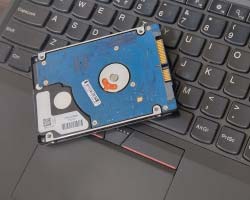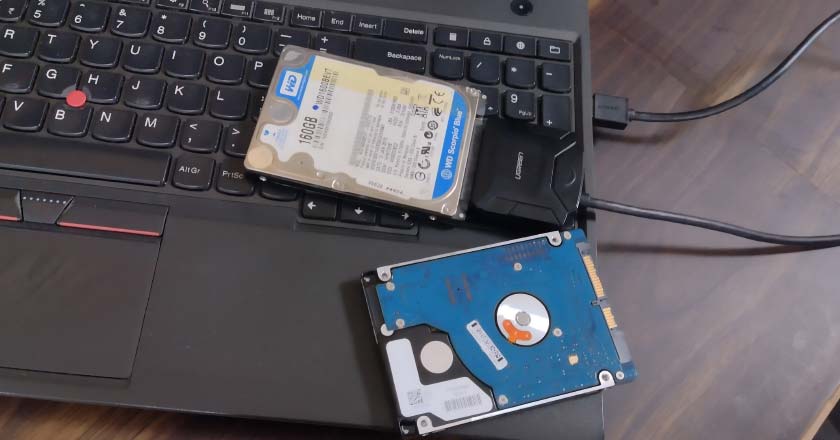Table of Contents
FAT vs NTFS File System

FAT (File Allocation Table) and NTFS (New Technology File System) are two file systems used to store and organize data on a hard disk drive (HDD) or solid-state drive (SSD). Both file systems were developed by Microsoft, with FAT being introduced in the 1980s and NTFS in the 1990s.
In terms of compatibility, FAT is more widely supported than NTFS, as it is compatible with a wide range of operating systems, including older versions of Windows, as well as other operating systems, such as macOS, Linux, and DOS. NTFS is only compatible with Windows operating systems, as well as some third-party utilities that support NTFS file systems.
In terms of performance, NTFS is generally faster and more efficient than FAT, as it uses a more advanced file system structure that is optimized for modern operating systems and hardware. NTFS also provides better error recovery, as it uses a journaling system to keep track of changes to the file system and recover from disk errors more effectively.
- File Allocation Table
FAT is a simple file system that is designed to be compatible with a wide range of operating systems and devices. It uses a single table, called the File Allocation Table, to keep track of the location of each file on the disk.
FAT supports disk sizes up to 2 GB and is limited to 8.3 character filenames, which can make it difficult to use with modern operating systems and file names.
- New Technology File System
NTFS is a more advanced file system that was introduced as part of the Windows NT operating system. NTFS uses a more complex structure, including multiple tables and indexes, to keep track of the location of files on the disk.
NTFS supports disk sizes up to 256 TB and allows for long filenames up to 255 characters in length. NTFS also provides a number of advanced features, including file compression, encryption, and permissions, which make it a more secure and flexible file system.
In conclusion, FAT is a simple and widely compatible file system that is well-suited to small disk sizes and older operating systems. NTFS is a more advanced and secure file system that provides better performance and error recovery, as well as advanced features such as file compression, encryption, and permissions. The choice between FAT and NTFS will depend on your operating system and your specific needs, including disk size, file compatibility, and security requirements.

MBR vs GPT
MBR (Master Boot Record) and GPT (GUID Partition Table) are two different disk partitioning styles used to store information about the partitions on a hard disk drive (HDD) or solid-state drive (SSD). The main difference between MBR and GPT is the number of partitions they support, the size of the disk they can be used with, and the boot process they support.
| MBR:(Master Boot Record) | MBR is an older partitioning style that was first introduced with the IBM PC in the 1980s. It uses a single sector, called the Master Boot Record, to store information about up to four primary partitions on a disk. MBR supports disks up to 2 TB in size and is compatible with most older operating systems, including MS-DOS, Windows 95, Windows 98, Windows XP, and Windows Vista. |
| GPT:(GUID Partition Table) | GPT is a newer partitioning style that was introduced as part of the UEFI (Unified Extensible Firmware Interface) standard. Unlike MBR, GPT uses multiple sectors to store information about partitions on a disk. This makes GPT much more flexible and scalable than MBR, allowing it to support disks up to 9.4 zettabytes in size and up to 128 partitions. GPT is compatible with modern operating systems, including Windows 7, Windows 8, Windows 10, and macOS. |
In terms of boot process, MBR uses the boot loader to load the operating system from the primary partition, while GPT uses the UEFI firmware to boot the operating system. UEFI is considered to be a more secure and flexible boot process, as it allows for the use of secure boot, which helps to prevent malware from infecting the system during the boot process.
In summary, if you have an older system or a disk less than 2 TB in size, you may want to use MBR, as it is compatible with most older operating systems and supports disks up to 2 TB in size. However, if you have a newer system or a disk larger than 2 TB, you should use GPT, as it supports disks up to 9.4 zettabytes in size and is compatible with modern operating systems.
Dynamic Partition
❖ Dynamic partitions are a type of disk partitioning that is used with the Logical Disk Manager (LDM) in Microsoft Windows. Dynamic partitions differ from basic partitions in that they are managed by the LDM, rather than by the disk partitioning tools included with the operating system.
❖ With dynamic partitions, you can create and manage partitions on the fly, without having to restart your computer or use disk management tools. This makes it easier to resize, extend, or shrink partitions, as well as to create new partitions from unallocated space on the disk.
❖ Dynamic partitions also allow you to create complex disk configurations, such as mirrored volumes or RAID arrays, that provide improved performance and reliability. When you use dynamic partitions, the LDM creates a database that keeps track of the partitions on the disk and their configuration. This database is stored in a hidden partition on the disk, separate from the partitions you use for storing your data.
❖ Dynamic partitions are supported by Microsoft Windows 2000 and later operating systems, including Windows 7, Windows 8, and Windows 10. However, they are not supported by earlier operating systems, such as Windows 98 or Windows NT, or by other operating systems, such as macOS or Linux.
In conclusion, dynamic partitions offer a more flexible and scalable way of managing disk partitions, especially when you need to create complex disk configurations or when you want to be able to resize and manage partitions without having to restart your computer. However, they are not supported by all operating systems, so it is important to consider your operating system and your needs when deciding whether to use dynamic partitions.
Posted By: Technogeek | Updated On: March 31, 2023